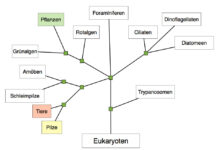System Group: 7 Powerful Insights You Must Know in 2024
Ever wondered how complex organizations maintain order, security, and efficiency? The answer often lies in a simple yet powerful concept: the system group. It’s not just a tech term—it’s the backbone of modern digital infrastructure.
What Is a System Group?

The term system group might sound technical, but it’s a foundational concept in computing, organizational design, and cybersecurity. At its core, a system group is a collection of users, processes, or devices grouped together to streamline access control, permissions, and administrative tasks within an operating system or network environment. Think of it as a digital team roster that determines who can do what on a computer or server.
Definition and Basic Function
In computing, a system group is a logical grouping of user accounts that share common access rights and privileges. Instead of assigning permissions to each user individually, administrators assign them to a group, simplifying management. For example, in Linux systems, the sudo group grants members elevated privileges to execute administrative commands. This reduces redundancy and enhances security by limiting direct root access.
System groups are not limited to user accounts. They can also include system processes, services, or even hardware components that operate under shared permissions. This abstraction allows operating systems like Windows, macOS, and Linux to enforce security policies efficiently.
Historical Evolution of System Groups
The concept of grouping users for access control dates back to the early days of multi-user operating systems in the 1960s and 70s. Systems like MULTICS and UNIX introduced the idea of user and group identifiers (UIDs and GIDs) to manage file permissions and process ownership. As networks grew, so did the complexity of access control, leading to the development of more sophisticated group management systems.
By the 1990s, with the rise of enterprise networks and directory services like Novell NetWare and Microsoft’s Active Directory, system groups evolved into centralized identity management tools. Today, cloud platforms like AWS IAM and Azure AD use group-based policies to manage millions of users across global infrastructures.
Types of System Groups
There are several types of system groups, each serving a specific purpose:
- Primary Groups: The default group assigned to a user upon creation. In Linux, every user belongs to a primary group that owns their files by default.
- Secondary (Supplementary) Groups: Additional groups a user can belong to for extended access. For example, a developer might be in the
devanddockergroups to access development tools. - System (Reserved) Groups: Used by the OS for internal processes (e.g.,
daemon,sys). These often have GID ranges below 1000 and are not meant for human users. - Administrative Groups: Grant elevated privileges, such as
sudoin Linux orAdministratorsin Windows.
Understanding these types helps administrators design secure and scalable permission models.
“Group-based access control is one of the most effective ways to enforce the principle of least privilege in system administration.” — NIST Special Publication 800-53
System Group in Operating Systems
Different operating systems implement system groups in unique ways, but the underlying principles remain consistent: simplify access control, enhance security, and improve manageability. Let’s explore how major OS platforms handle system groups.
Linux and Unix-Based Systems
In Linux, system groups are managed through files like /etc/group and /etc/passwd. Each group has a name and a Group ID (GID). Users are assigned to groups via their user record, and group membership determines file and directory access based on permission bits (read, write, execute).
For example, to add a user to a group in Linux, you’d use the usermod command:
sudo usermod -aG docker johnThis adds user john to the docker group, allowing them to run Docker commands without sudo. Tools like id and groups help verify membership.
Linux also supports group hierarchies through LDAP or SSSD in enterprise environments, enabling centralized group management across thousands of machines. For more on Linux group management, visit the Linux Foundation’s guide.
Windows Operating Systems
Windows uses a more graphical and hierarchical approach to system groups through Local Users and Groups or Active Directory. Built-in groups like Administrators, Users, and Guests define default access levels. Administrators can create custom groups via Computer Management or PowerShell.
PowerShell commands like New-LocalGroup and Add-LocalGroupMember allow scriptable group management:
system group – System group menjadi aspek penting yang dibahas di sini.
New-LocalGroup -Name "Developers"
Add-LocalGroupMember -Group "Developers" -Member "Alice"In domain environments, Group Policy Objects (GPOs) apply settings and permissions based on group membership, making system groups a cornerstone of Windows enterprise security.
macOS and Unix-Like Permissions
macOS, being Unix-based, follows POSIX standards for system groups. It uses the same /etc/group structure and supports command-line tools like dscl for directory service management. However, macOS also integrates with Apple’s Directory Utility and Open Directory for networked environments.
Unlike Linux, macOS emphasizes GUI tools like System Preferences and Users & Groups pane for managing local groups. Still, advanced users and IT admins rely on Terminal commands for automation and bulk operations.
“macOS combines the robustness of Unix permissions with user-friendly interfaces, making system group management accessible yet powerful.” — Apple Support Documentation
The Role of System Groups in Cybersecurity
System groups are not just about convenience—they are a critical component of cybersecurity. Proper group management helps enforce the principle of least privilege, reducing the attack surface and minimizing the impact of compromised accounts.
Principle of Least Privilege
The principle of least privilege (PoLP) states that users and processes should have only the minimum access necessary to perform their tasks. System groups enable this by allowing administrators to grant specific permissions to groups rather than individuals.
For example, instead of giving every employee full access to financial records, a company can create a finance-team group with read-write access to relevant folders. Others outside the group are automatically denied access, even if they have physical access to the machine.
This granular control prevents accidental data leaks and limits lateral movement in case of a breach.
Preventing Unauthorized Access
One of the biggest security risks in any organization is privilege creep—users accumulating permissions over time. System groups help mitigate this by making it easy to audit and revoke access.
Regular audits of group membership ensure that only active, authorized users remain in sensitive groups like sudo or Domain Admins. Automated tools like Microsoft’s Azure AD Access Reviews or open-source solutions like OSSEC can monitor group changes in real time.
Additionally, using role-based access control (RBAC) with system groups ensures that permissions are tied to job functions, not individuals, making transitions smoother and more secure.
Audit and Compliance Requirements
Many industries are subject to regulations like GDPR, HIPAA, or SOX, which require strict access controls and audit trails. System groups play a vital role in meeting these compliance standards.
For instance, HIPAA mandates that healthcare organizations control access to patient data. By organizing staff into system groups like doctors, nurses, and admin-staff, hospitals can ensure that only authorized personnel access electronic health records (EHRs).
Audit logs can then track who accessed what data and when, providing evidence for compliance audits. Tools like Splunk or ELK Stack can parse system logs to generate compliance reports automatically.
“Effective group management is a cornerstone of regulatory compliance in IT governance.” — ISACA COBIT Framework
System Group Management in Enterprise Environments
In large organizations, managing system groups manually is impractical. Enterprise environments require scalable, centralized solutions to handle thousands of users and devices across multiple locations.
Active Directory and LDAP
Microsoft Active Directory (AD) is one of the most widely used directory services for managing system groups in Windows-dominated environments. AD allows administrators to create security groups and distribution groups, apply Group Policy, and manage access across domains.
system group – System group menjadi aspek penting yang dibahas di sini.
Similarly, Lightweight Directory Access Protocol (LDAP) is used in Unix/Linux and cross-platform environments. OpenLDAP and Red Hat Directory Server provide LDAP services that integrate with system group management in Linux systems.
Both AD and LDAP support nested groups, where one group can be a member of another, enabling hierarchical access models. For example, a global-it group might include regional it-north and it-south groups.
Cloud-Based Identity Management
With the shift to cloud computing, traditional on-premise group management is evolving. Platforms like Azure AD, AWS Identity and Access Management (IAM), and Google Cloud IAM offer cloud-native system group equivalents.
In AWS IAM, for example, you can create groups like developers, devops, or auditors and attach policies that define their permissions. This allows fine-grained control over who can launch EC2 instances, access S3 buckets, or modify security groups.
These cloud services also support single sign-on (SSO) and multi-factor authentication (MFA), enhancing security while simplifying user experience.
Learn more about AWS IAM groups at the official AWS documentation.
Automating Group Management
Manual group management is error-prone and time-consuming. Automation tools like Ansible, Puppet, and Chef allow IT teams to define group policies as code, ensuring consistency across environments.
For example, an Ansible playbook can ensure that every new server has a monitoring group with specific users added:
- name: Ensure monitoring group exists
group:
name: monitoring
state: present
- name: Add user to monitoring group
user:
name: alice
groups: monitoring
append: yesThis Infrastructure-as-Code (IaC) approach reduces configuration drift and accelerates onboarding.
“Automation transforms system group management from a reactive task to a proactive, scalable process.” — DevOps Institute Report 2023
System Group vs. User Roles: Understanding the Difference
While often used interchangeably, system groups and user roles are distinct concepts. Understanding the difference is crucial for effective access control design.
Defining User Roles
A user role represents a job function or responsibility within an organization—such as developer, manager, or auditor. Roles are abstract and business-oriented, defining what a person is supposed to do.
Role-Based Access Control (RBAC) maps these roles to specific permissions. For example, a developer role might include access to code repositories, testing environments, and deployment tools.
How System Groups Implement Roles
System groups are the technical implementation of roles. A developer role might be realized as a dev-team system group with access to Git servers, CI/CD pipelines, and staging databases.
In practice, one role can map to multiple groups. A senior developer might belong to both dev-team and code-reviewers groups, each granting different levels of access.
This separation allows flexibility: roles define the policy, while groups enforce it technically.
system group – System group menjadi aspek penting yang dibahas di sini.
Best Practices for Role-to-Group Mapping
To ensure clarity and security, follow these best practices:
- Use Descriptive Names: Name groups based on roles (e.g.,
finance-approvers, notgroup123). - Avoid Overlapping Permissions: Design groups so that no user has more access than needed.
- Regularly Review Membership: Conduct quarterly audits to remove inactive or unauthorized users.
- Leverage Dynamic Groups: In cloud environments, use rules-based groups (e.g., “all users in department = IT”) to automate membership.
These practices reduce administrative overhead and improve security posture.
Common Challenges in System Group Administration
Despite their benefits, system groups can introduce challenges if not managed properly. Administrators often face issues related to complexity, visibility, and legacy systems.
Permission Bloat and Shadow Admins
Over time, users may accumulate group memberships through transfers, promotions, or temporary projects. This leads to permission bloat—users having more access than they need.
Worse, some users may become “shadow admins” by being added to powerful groups without proper oversight. This violates least privilege and increases risk.
Solution: Implement Just-In-Time (JIT) access and regular access certification campaigns to clean up unused permissions.
Lack of Centralized Oversight
In decentralized environments, different departments may create their own local groups, leading to inconsistency and security gaps. For example, the marketing team might have a local admins group on a shared server, unbeknownst to IT.
Solution: Enforce centralized identity management using directory services or cloud IAM. Use monitoring tools to detect unauthorized group creation.
Legacy Systems and Compatibility Issues
Older applications or systems may not support modern group management standards. Some legacy software runs only under specific user accounts, bypassing group-based permissions entirely.
This forces organizations to maintain outdated practices, increasing risk. Migration to modern platforms should include a plan for group-based access redesign.
“Legacy systems are the weakest link in group-based security models.” — SANS Institute Security Report
Future Trends in System Group Technology
As technology evolves, so does the concept of the system group. Emerging trends are reshaping how we think about access control and identity management.
Zero Trust and Dynamic Grouping
The Zero Trust security model assumes no user or device is trusted by default, even inside the network. This shifts focus from static groups to dynamic, context-aware access decisions.
Modern systems use attributes like location, device health, and time of day to determine access—going beyond simple group membership. For example, a user in the finance group might only access financial systems from a company-managed device during business hours.
Tools like Microsoft Entra ID and Google BeyondCorp enable this dynamic authorization.
AI-Driven Access Recommendations
Artificial intelligence is being used to analyze user behavior and recommend group memberships. AI can detect anomalies—like a user suddenly accessing files outside their role—and flag them for review.
system group – System group menjadi aspek penting yang dibahas di sini.
It can also suggest optimal group assignments based on peer behavior, reducing manual configuration errors.
For example, if most developers in a team have access to a certain database, AI might recommend adding a new developer to the same group.
Integration with DevOps and CI/CD Pipelines
In DevOps environments, system groups are integrated into CI/CD pipelines to manage access to code, infrastructure, and deployment tools. Tools like GitHub Teams, GitLab Groups, and Jenkins Role Strategy Plugin enforce group-based access to repositories and build jobs.
This ensures that only authorized teams can merge code or deploy to production, reducing the risk of unauthorized changes.
As infrastructure becomes code, system groups become part of the version-controlled configuration, enhancing auditability and reproducibility.
“The future of system groups lies in automation, intelligence, and integration with modern development workflows.” — Gartner, 2024
What is a system group?
A system group is a collection of users, processes, or devices grouped together to manage permissions and access control in an operating system or network. It simplifies administration and enhances security by allowing bulk assignment of privileges.
How do I manage system groups in Linux?
In Linux, use commands like groupadd, usermod, and groups to create, modify, and view group memberships. Configuration files like /etc/group store group information. For enterprise setups, consider LDAP or SSSD integration.
What is the difference between a system group and a user role?
A user role defines a job function (e.g., developer, manager), while a system group is the technical implementation that grants specific permissions. Roles are business concepts; groups are technical enforcement mechanisms.
Why are system groups important for security?
System groups enforce the principle of least privilege, reduce administrative overhead, and enable auditability. They prevent unauthorized access and are essential for compliance with regulations like GDPR and HIPAA.
Can system groups be used in cloud environments?
Yes, cloud platforms like AWS IAM, Azure AD, and Google Cloud IAM use group-like constructs to manage user permissions. These support automation, dynamic membership, and integration with SSO and MFA.
system group – System group menjadi aspek penting yang dibahas di sini.
System group is more than a technical detail—it’s a strategic tool for managing access, enforcing security, and scaling operations. From Linux servers to cloud platforms, system groups form the foundation of modern identity and access management. As organizations adopt Zero Trust, AI, and DevOps, the role of system groups will only grow in importance. By understanding their function, challenges, and future trends, IT professionals can build more secure, efficient, and compliant systems.
Further Reading:









